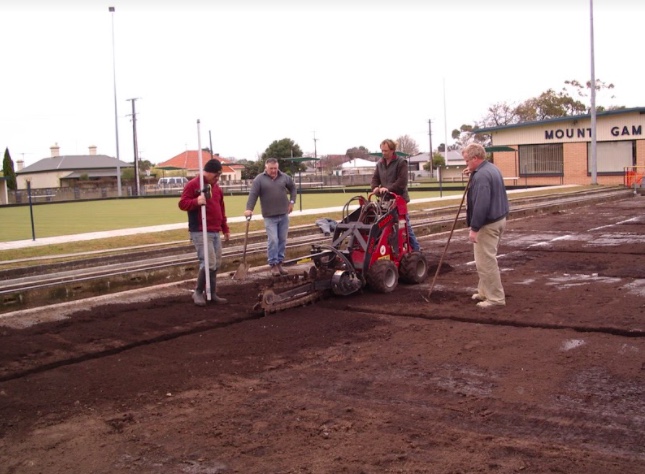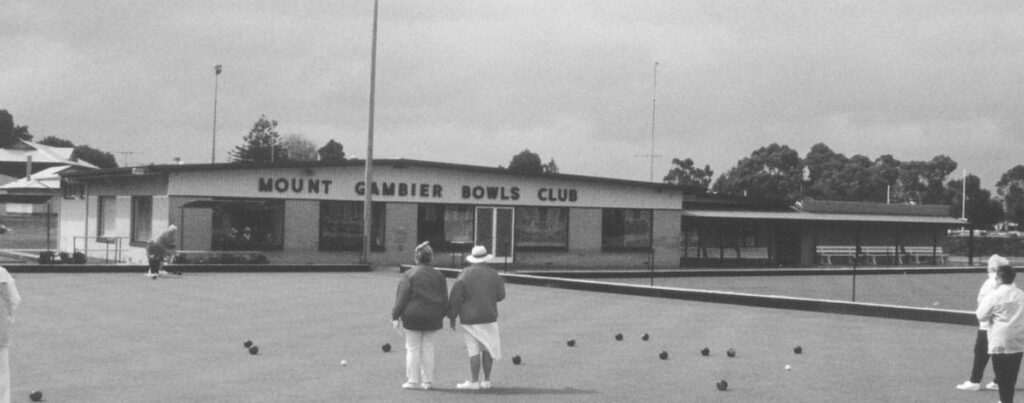Mount Gambier Bowls Club is the oldest lawn bowls club in regional South Australia.
The club started with a few enterprising gentlemen in 1893 as John Watson and C B Flint tried to form a club. They tried again in 1896 but neither succeeded. In 1901 they had managed to secure land on Ferrers Street next to Mount Gambier Tennis Club.
By 1904 chairman T Yates, Tom Haig, V Spain and secretary W Nichols had established the club and the Mount Gambier Bowling Club was registered with 100 members by the South Australian Bowling Association.
The opening in 1904 was a grand event and members of Portland Bowling Club travelled by horse and carriage to celebrate. By 1939 the club membership had increased and the Ferrers Street site was no longer big enough, with the committee negotiating with City Council for a piece of land on the southwest corner of Vansittart Park.
Council agreed and the land was leased for 10 shillings per year rising to 10 pounds over five yearly increments. Following council approval the committee set about establishing greens, a small stone clubrooms that forms the core of the current building and terraced the gardens.
By 1954, which was the club’s fiftieth year, the membership had risen to close to 200 members and the clubrooms were expanded and a Ladies Associated Club was formed.
Ladies were not allowed to be full members and could not vote at general meetings of the club until the constitution was changed in 2004.
These were the days when demure dress was a requirement, the ladies had to wear all white dress, a hat and the hem of their skirt was measured to be 18 inches from the ground. Clearly the ladies of this generation were not deterred and ladies bowls thrived.
On tournament days three greens would be filled by the ladies of the South East. The ladies had their own committee and ran their own bowls as well as making a massive contribution to the functioning of the Mount Gambier Bowling Club.
The celebrations of the club’s fiftieth anniversary clearly reflected this contribution. By 1960 the club had a membership of about 250 and in 1964 a small group left to form the Mount Gambier and District RSL Bowling Club.
During the next period the club continued to extend the clubrooms and by 2004, when the club celebrated its centenary, there was a membership of about 180. Bowls SA (changed from the South Australian Bowling Association) brought the interstate match between Victoria and South Australia to the club.
The club changed its constitution, before Bowls SA made it a requirement on all clubs. Members then trialled coloured clothing and proposed a covered green on “D” Green. The cover over “D” Green was supported by Mount Gambier City Council’s Greg Muller and council paid for the design of a curved roof building, which was unfortunately beyond the financial capacity of the club.
Economic circumstances forced members to look at options for reducing costs and opted to change “B” Green to synthetic, with the first carpet green in South Australia. “This completely changed the club’s financial outlook. In 2004 Mount Gambier Bowls
Club began to move from the 19th century to the 21st century and over the next 20 years these changes were to keep coming.
Coloured clothing was adopted by all clubs and the installation of synthetic greens became the norm. In 2005 the club entertained the Scottish National Bowls team with their preparation for the Commonwealth Games in Melbourne.
In 2006 “C” Green was changed to synthetic carpet with a $50,000 Federal Government Grant and in 2008 the club self-funded the conversion of “A” Green. “D” Green, that was no longer in use, was converted to car-parking.
The club continued on until 2017 with minor works like upgrading the kitchen and bar and reorganising the office. Bob Cranwell, who had moved from Port MacDonnell to Mount Gambier Bowls Club, asked if $200,000 would fund a cover over one of the greens.
Investigations began and the club looked at a number of alternatives ranging from $800,000 to $1200,000. Many of these options were not acceptable for a location like Vansittart Park and those that were, were unaffordable.
The search continued until someone asked members if they had seen the cattle sheds at Kongorong made a local shed construction business. A small team visited Kongorong and armed with photos produced a proposal for the cover.
Members discussed this with the builder and the price under $500,000 looked achievable if the club could access government help. The club applied for a $100,000 grant and President Ian von Stanke took the proposal to the AGM.
The club approved the project subject to a grant being received. Members started discussions with council officers and received general support for the project, subject to meeting some aesthetic criteria, none of which was unachievable.
In August the club received a grant of $100,000 and had an informal meeting with Minister Cory Wingard, who was in the South East at the time. The club generated some detailed designs, keeping the building profile as low as practicable.
These were discussed with the shed builder who confirmed the price for the structure at under $300,000. Once lighting, blinds and plumbing were added the total cost of $400,000 seemed achievable. The club re-engaged with council and again received support for the project to proceed but the Heritage Adviser was not supportive, being opposed to any building of the scale of the cover on Vansittart Park.
The board continued to press on, seeking alternative prices and Thomson Bilt agreed to meet the original cost, with members working with new council chief executive Andrew Meddle to break the design impasse. After protracted negotiations a design was settled on and council approved the new building in August 2020.
Construction began in September 2020, with the green closed for the whole of 20-21 season.










